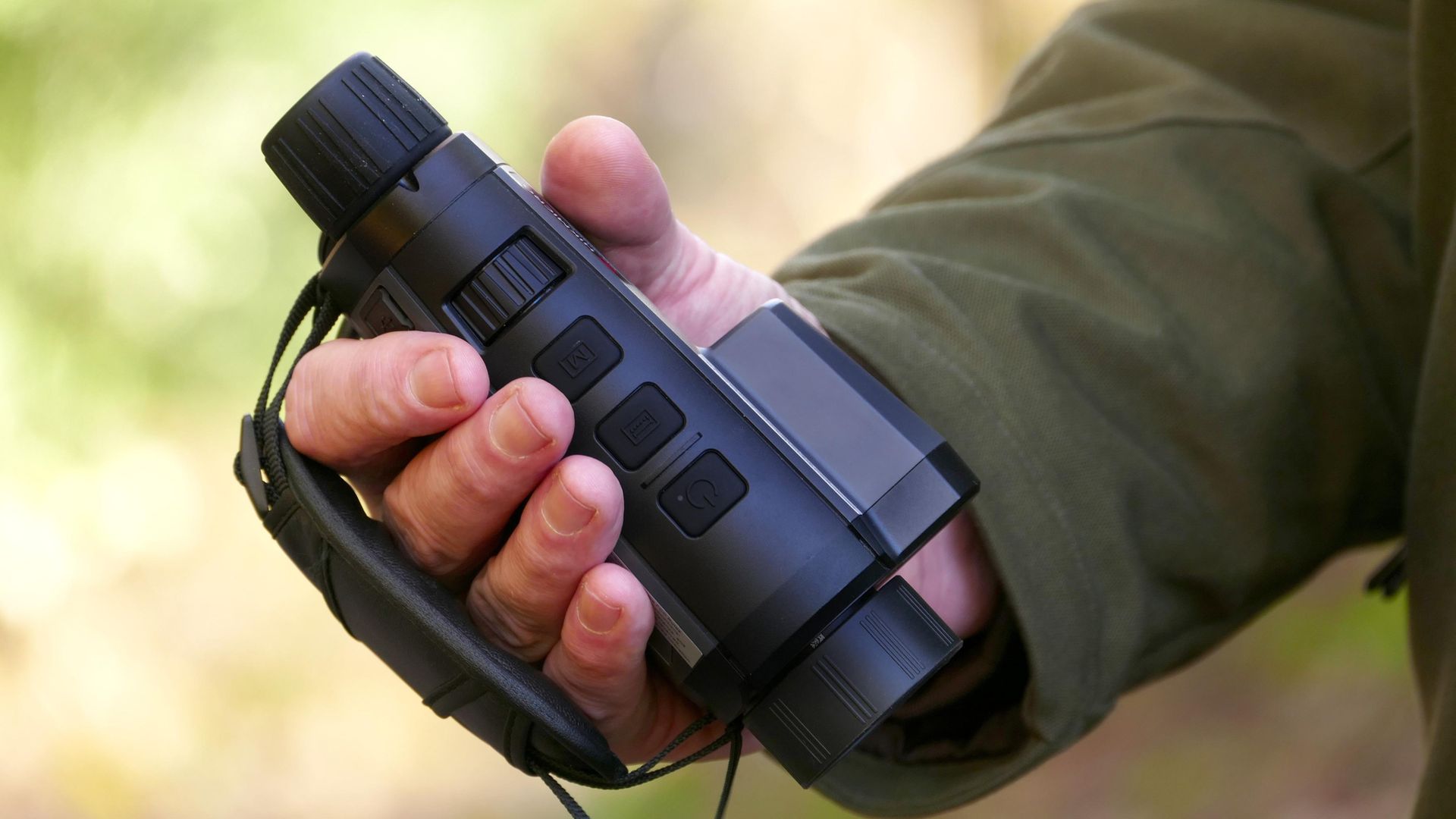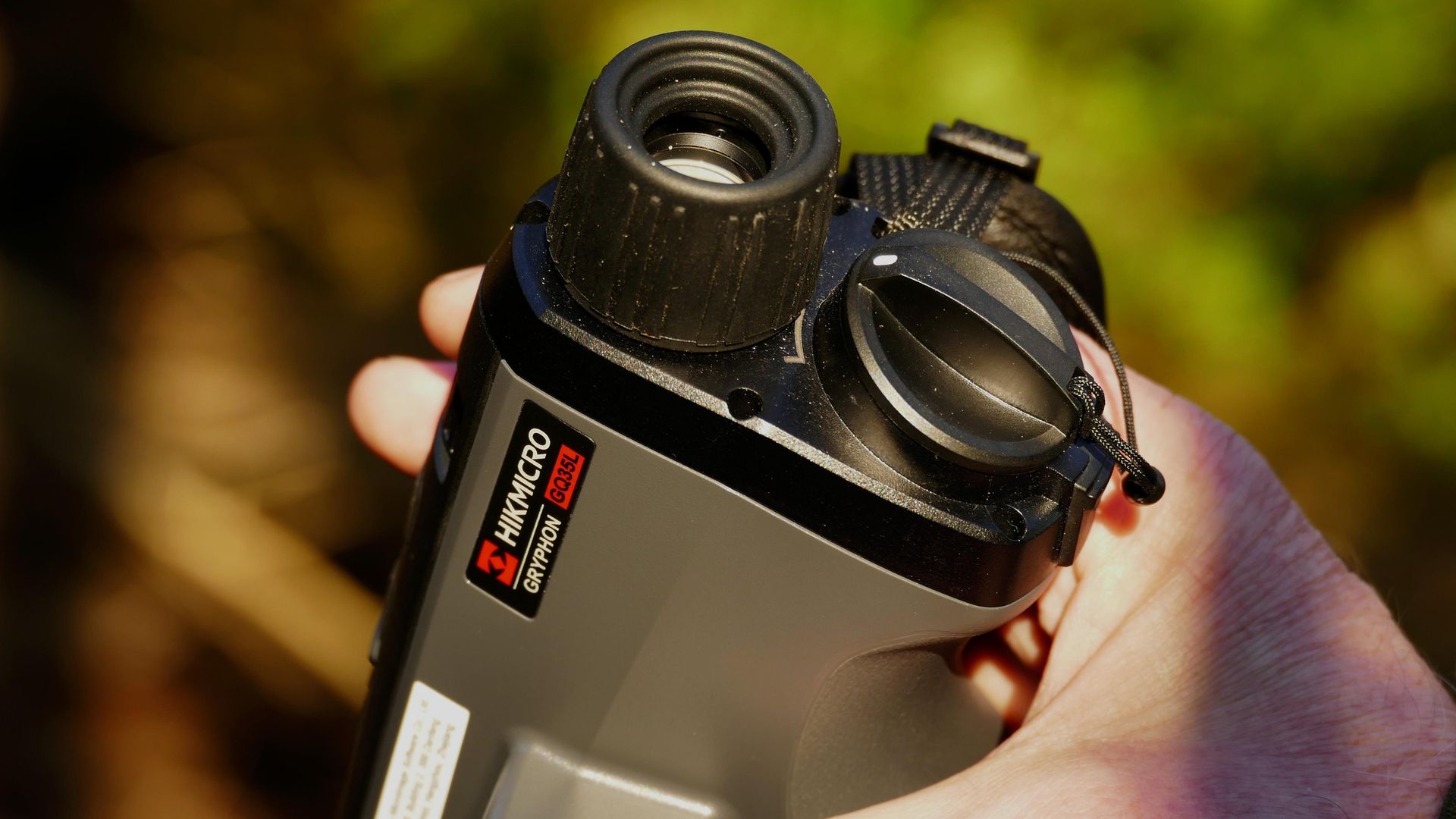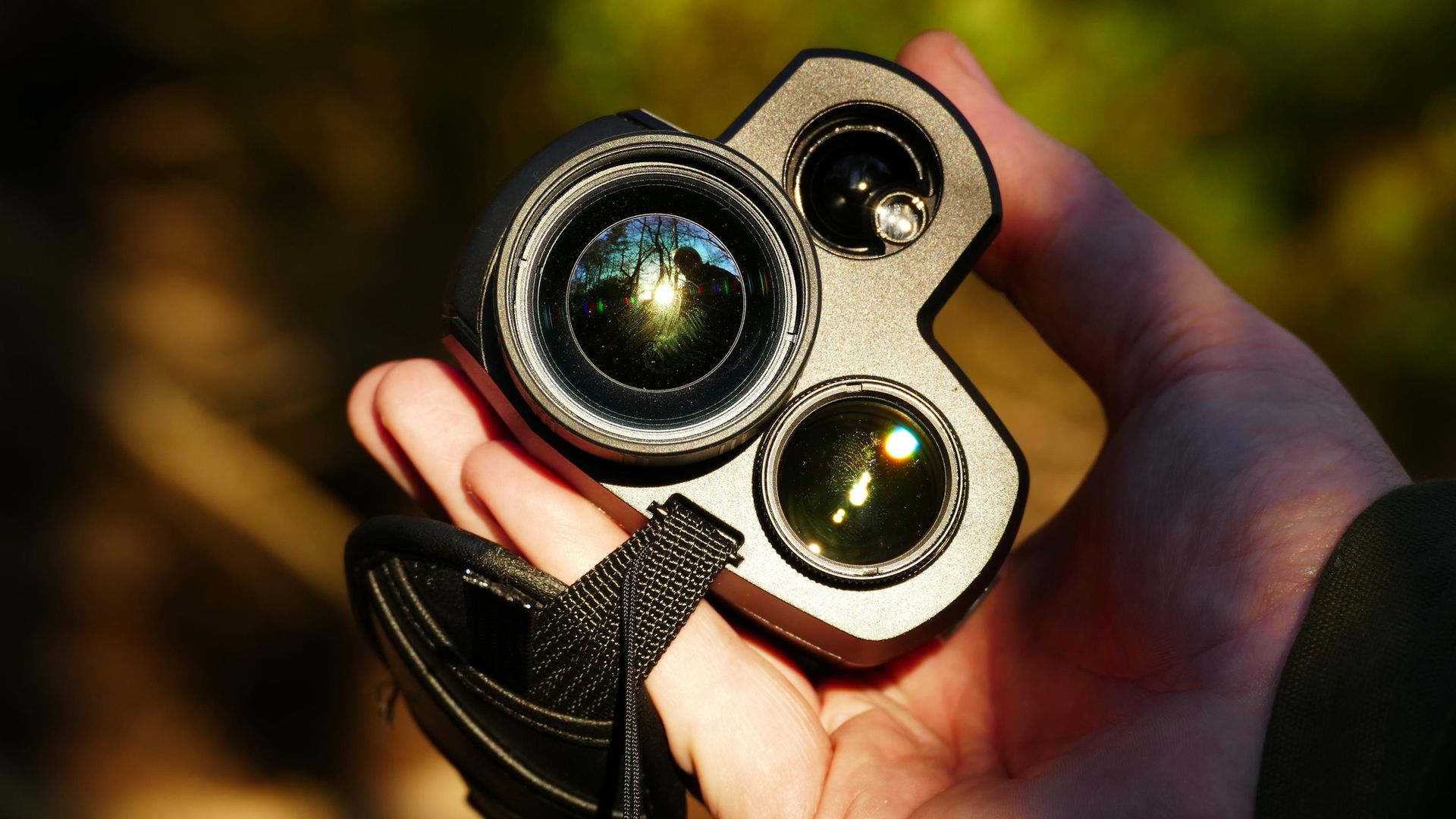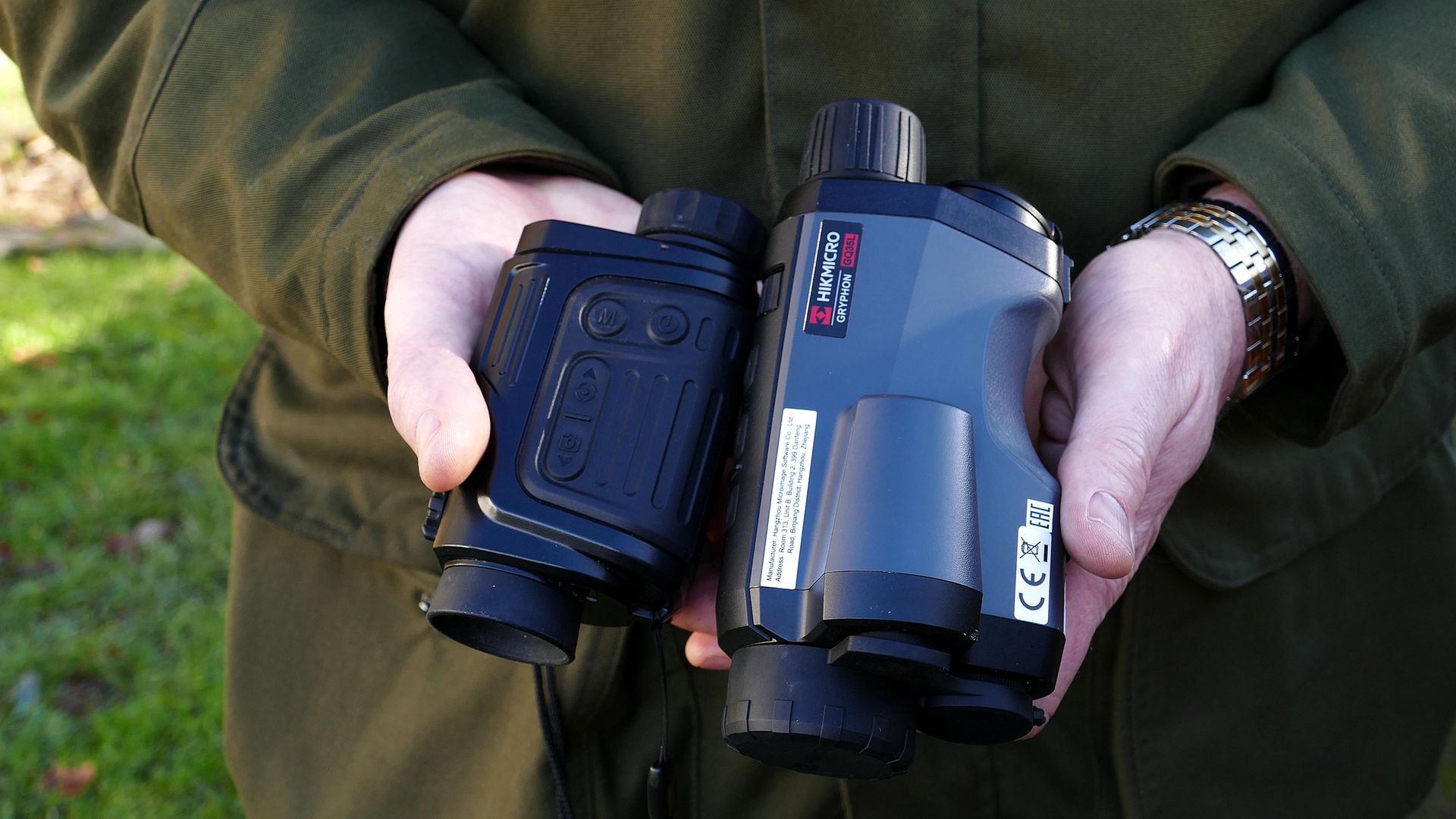Paul Austin field tests the latest in thermal spotting and rangefinding tech from HikMicro. How does the Gryphon LRF measure up against the competition?
 credit: Archant
credit: Archant
HikMicro are certainly piling on the pressure in the thermal market, with a seemingly endless array of product releases for both in-hand and on-the-gun applications. The latest of these is the much anticipated Gryphon.
I was fortunate enough to get hold of a top-of-the-range 640 sensor variant of the Gryphon LRF from the lovely ladies at Rural Sports. I immediately teamed up with a couple of contract foxers who are tasked with the job of keeping Charlie under control over a vast area on the high hill. Their main goal is to give ground-nesting birds a fighting chance in what is seriously challenging terrain.
These high tops are usually the domain of game birds, sheep and the occasional SAS squad looking for a challenge. However all livestock and, I assume, squaddies had been moved elsewhere to further aid the conservation effort. It’s bleak, cold and almost devoid of cover – and yet still beautiful. It’s the ideal environment for a thermal, especially one with laser rangefinding (LRF). In this landscape long shots are the norm and my two companions were keen to see if the Gryphon was up to the challenge.
The big USP for the Gryphon, according to the accompanying bumf, is Image Fusion technology. Essentially the unit has an extra camera/lens that records a separate IR image that can be overlaid on the thermal image, the goal being to enhance fine detail. To be honest, I’m not convinced. It works well in the man-made world, adding definition to straight lines and angular surfaces, but in the organic environment in which we hunt it adds little in my opinion.
This isn’t a problem as such; it’s just a feature that doesn’t really work when hunting. There’s also a noticeable drop in the refresh rate when Image Fusion mode is applied, which also doesn’t add to its appeal. There is an option to view the IR image by itself, which in certain circumstances might be handy, but overall it’s not the ‘must have’ feature the marketing men would have us believe.
 credit: Archant
credit: Archant
The good news…
Aside from the rather gimmicky Image Fusion, in every other respect the Gryphon is very impressive, with the standout feature being the excellent LRF. The Gryphon’s main challenger is iRay’s FH25R, which offers similar 640 thermal and LRF features. I had both on hand for testing, so each unit was passed back and forth and opinions aired regarding their relative merits.
In terms of thermal image quality it was pretty much a split decision, with one shooter preferring the iRay and the other the HikMicro. In my opinion it’s too close to call; both are impressive and very similar in regard to their core image quality, although I suspect the Gryphon might have the edge in poor thermal conditions, courtesy of its 35mm lens, which should outperform the iRay’s smaller 25mm when the going gets tough.
In terms of convenience it was another close call, with both myself and another shooter preferring the smaller form factor of the iRay. The Gryphon isn’t huge by any means, but it’s certainly a tighter squeeze in the pocket. But in regard to the overall design and ergonomics I can’t fault the Gryphon. It sits well in the hand with your fingers falling naturally onto the top mounted buttons and control dial.
The Gryphon does have an advantage over the iRay in the form of swappable 18650 batteries. This was a major plus for the two contract shooters, who generally spend much longer out on the hill than most of us. The option to just pop in a share when needed is a definite selling point. It’s perhaps not a deal breaker for casual shooters but these guys regularly spend eight or nine hours out on the hill, so recharging can be an issue.
The star of the show for me was the LRF on the Gryphon; in this regard it beats the iRay hands down. The FH25R’s LRF is a bit hit and miss, often requiring multiple pings and sometimes needing a suitable target nearby to get an approximate range. The Gryphon, however, was fast, reliable and accurate. Like the iRay its maximum range is 600m and during testing it easily tracked a fox from 400m as it closed on our position.
 credit: Archant
credit: Archant
Command and control
When it comes to driving the Gryphon it’s all very familiar, with the usual array of short and long press combinations to activate menus and trigger features, and it’s all logically laid out. After a couple of trips you’ll be perfectly at home tweaking settings, altering the mag, and snapping pics and video when the fancy takes you.
A nice touch is the addition is a jog dial towards the ocular end. Primarily this is used to alter the mag level, with the smooth zoom function sliding up and down by 1x as you adjust the dial. However, it also acts as a selector when navigating menus – a nice addition to the well-implemented ergonomic design of the unit.
In terms of imaging it’s a familiar story with all the usual suspects – white hot, black hot, red hot and a couple of psychedelic options. As mentioned earlier, Image Fusion mode is a slight disappointment, being basically a reworking of a similar technology introduced by FLIR in their industrial thermal scanners. It’s a feature that works well to isolate problems in machinery, structures and electronics, but in its current form I can’t really see a viable hunting application.
 credit: Archant
credit: Archant
Competition is coming
The Gryphon is currently winning the war among pocket-sized thermal LRFs, but iRay have just launched their 35mm follow-up to the FH25R, not surprisingly entitled the FH35R, which we plan to review in the next of Rifle Shooter. If the new iRay can improve image quality alongside its rangefinding abilities, the Gryphon LRF could well have a fight on its hands.
All in all I’m very impressed with the Gryphon. Image Fusion is a gimmick that can be ignored, but what can’t be is the excellent design, image quality and functionality, alongside currently offering the best LRF in its class.
Tech specs
Thermal Sensor: 640×512, 12 μm
NETD: < 35mK
Lens: 35 mm / F1.0
FOV: 10.97° × 8.82°
Visible Camera: 1/2” Progressive Scan CMOS, 1960*1200
Laser Rangefinder: Wavelength: 905 nm, Measurement range: up to 600 m, Accuracy: ±1 m
Frame Rate: 50 Hz
Digital Zoom: 1×, 2×, 4×, 8×
Display: 0.39-inch, OLED, 1024 × 768
Battery Type: One 18650 battery
Operating Time: Up to 4.5 h
Photo & video: Yes
App connectivity: Yes
Weight: 510g
Ingress Protection: IP67
Operating Temp: -30°С ~ +55°С
Product: HikMicro Gryphon GQ35L
Supplier: Rural Sports
Web: www.ruralsportsltd.co.uk
Tel: 01691 648230